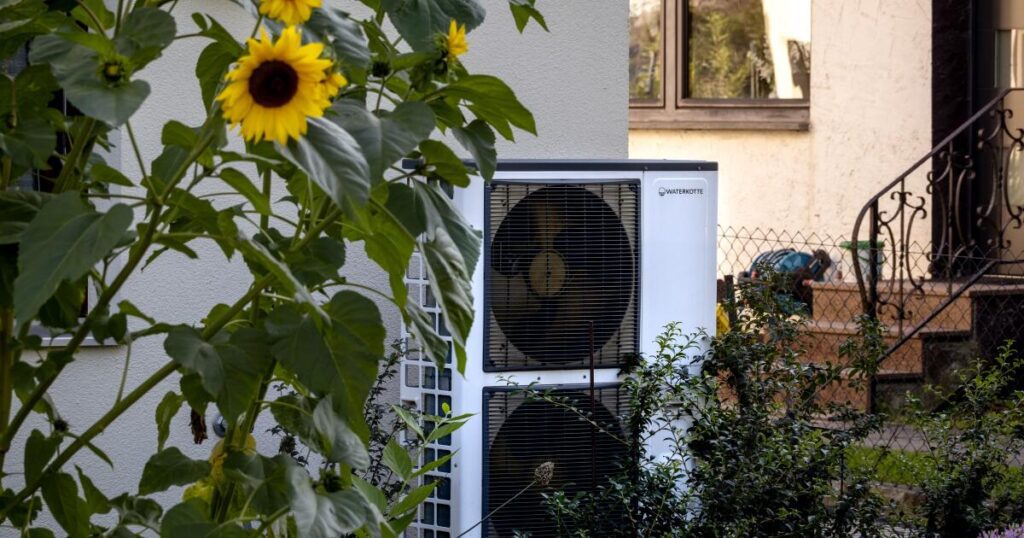The country's electric utilities have expressed overwhelming support for reducing carbon emissions. 80% of U.S. electricity customers are served by utilities aiming for 100% carbon reduction, according to the Smart Electric Power Alliance, and utility executives have touted their sustainability plans at the UN climate conference in Davos and beyond.
So why is it so hard to get help switching to a climate-friendly heat pump?
A wonder of modern engineering, heat pumps provide heating and cooling by moving warm or cool air into or out of the home, eliminating the need to generate heat. They have been shown to significantly reduce consumer heating costs and reduce greenhouse gas emissions by up to 50%.
Like many other Americans who helped fuel the residential construction boom in the wake of the pandemic, I recently embarked on a wholesale home remodel in the Bay Area. Unlike most of my remodeling colleagues, I make my living analyzing trends in customers' experience with the nation's electric, gas, and water utilities. As an energy geek, I saw the project as an opportunity to delve into the different incentives utilities are promoting to ease my transition from a gas furnace to an electric heat pump.
What I found was a tangle of red tape, well-meaning but tragically ill-informed customer service representatives, and hours upon hours of filing forms, chasing down vague information and questioning contractors — all in a quixotic quest to claim my local, state, and regional authority. Federal rebates.
Heat pumps loom large as a component of electric utility sustainability initiatives. The Biden administration recently announced that $63 million in CARA funding will be used to incentivize domestic heat pump manufacturing, and local, state, and federal incentives have been rolled out in most jurisdictions across the country to encourage consumers to switch.
At the federal level, consumers are eligible for a tax credit that covers 30% of the cost of purchasing and installing a heat pump, up to a maximum of $2,000 per year. The TECH Clean California program offers incentives to contractors to install heat pumps, and the Los Angeles Department of Water and Power and other utilities offer rebates and other benefits. In Marin County, where I live, state, county and local incentives promised to bring the total rebate on my project to nearly $5,000.
This prospect, coupled with the long-term value of increased efficiency, was enough to convince me to take a chance on a system that was only slightly more expensive than a comparable gas furnace. Furthermore, my extensive research on this topic was enough to overcome widespread misconceptions about technology and its ability to comfortably heat and cool my home.
The good news is that my heat pump works great! It's so good that I started recommending it to my friends and neighbors. It's not as loud or dry as traditional heat; It is even and smooth. The system allowed for greater flexibility in construction and design. Best of all, I now have central cooling for the first time.
Unfortunately, I've also put in hours of work chasing down rebates I haven't received yet.
Ironically, the easiest part of the process was applying for a federal deduction through the Internal Revenue Service. When the IRS sets a standard for customer service, you know you have a problem.
Among the challenges I encountered was a conversation that lasted over an hour with a friendly representative of Pacific Gas & Electric Co. Who knew absolutely nothing about heat pump software; the apologetic county official who told me I would need to fill out a commercial form even though my project was residential because “that's how papers are written”; And even asked to provide detailed photos of my old gas furnace – which had already been removed – to prove that I had made the switch.
Fortunately, because I was documenting the process in part for my own education, I had those photos and welcomed the opportunity to find all the hurdles consumers face. But will ordinary consumers — those who don't spend their workdays analyzing the minutiae of the utility customer experience — care to deal with this madness? Probably not.
This may have something to do with widespread customer apathy toward electric utilities' sustainability efforts. J.D. Power's most recent study on the topic found that only 19% of customers were aware of their utilities' carbon reduction initiatives.
We live in an age of incredible technological innovation, and we have public policies designed to incentivize consumers to embrace these innovations. But if the same old bureaucratic hurdles stand in the way of access to those programs, no one wins.
There is a huge opportunity here for innovative utilities to take the lead in improving not only our policies but also the mechanisms that make them work. As a utility industry professional, I am optimistic that our leaders will embrace this cause. As a consumer, I just hope I finally get my discount.
Andrew Heath is vice president of utility intelligence at JD Power.
